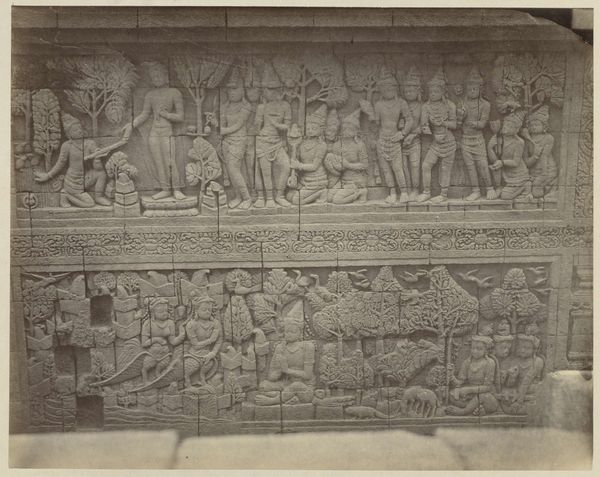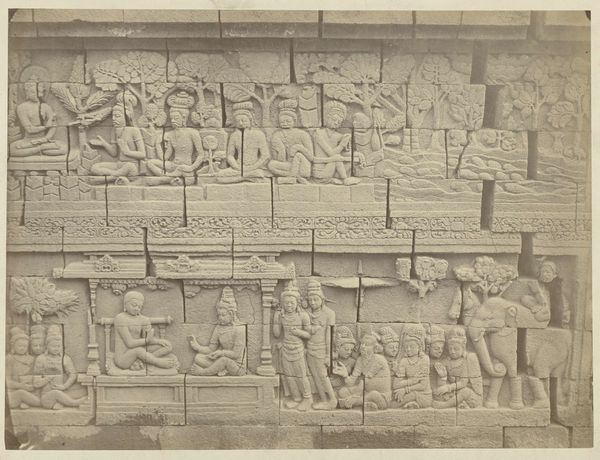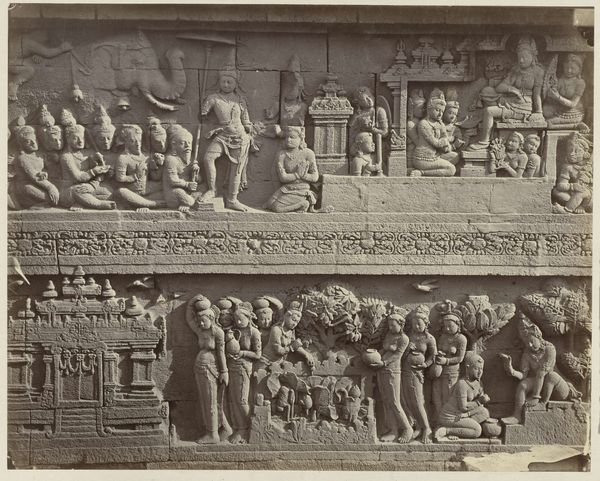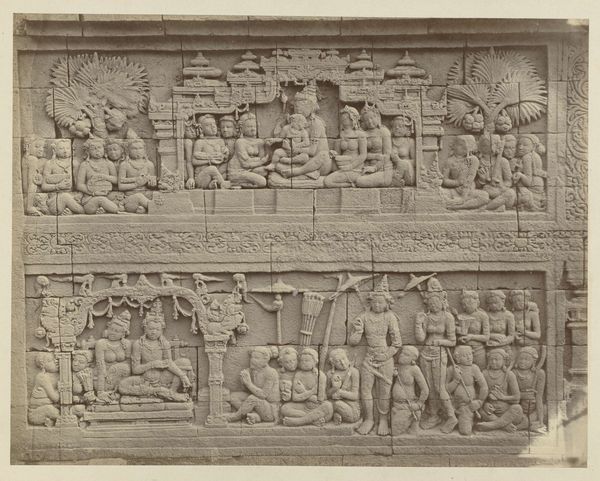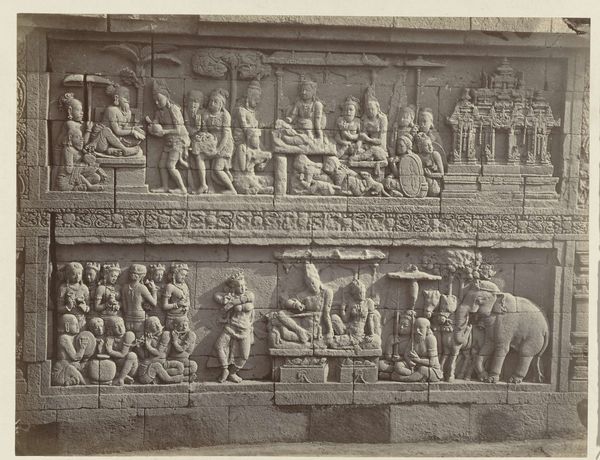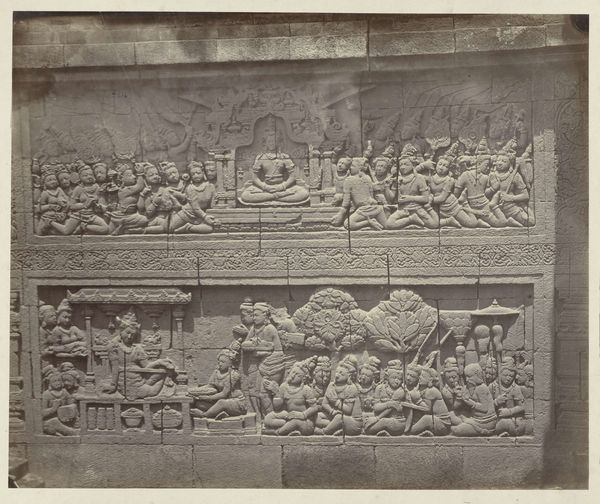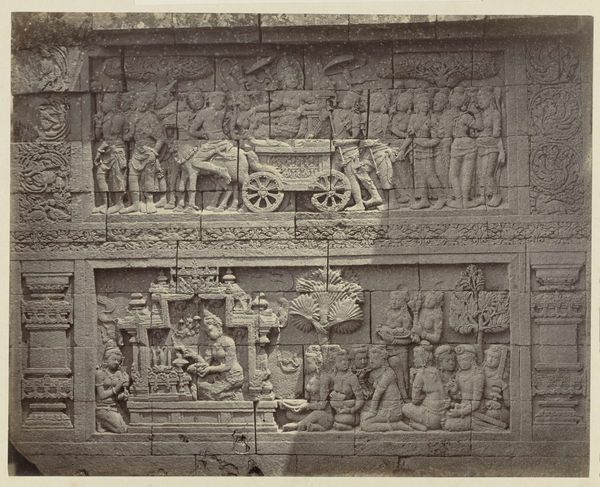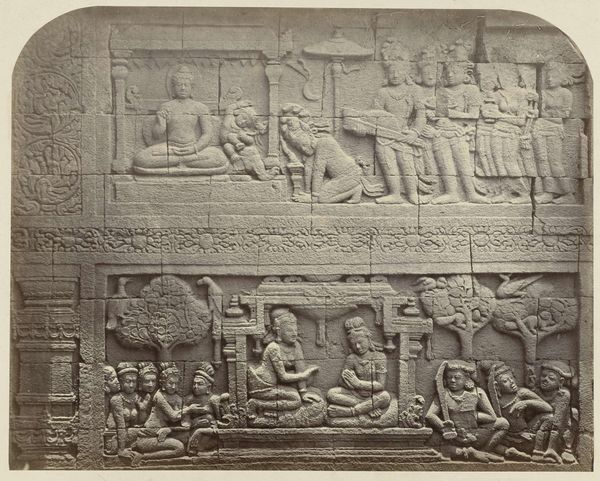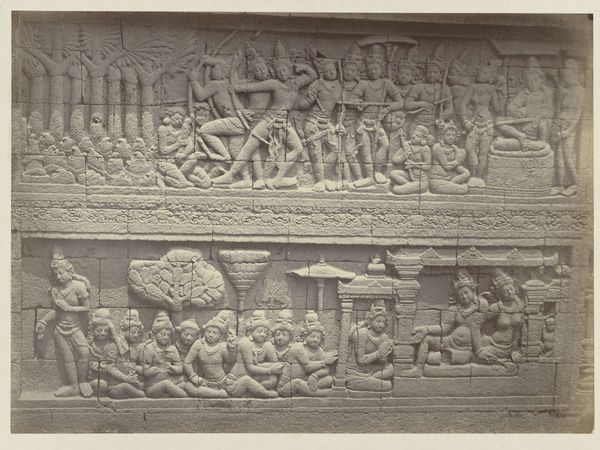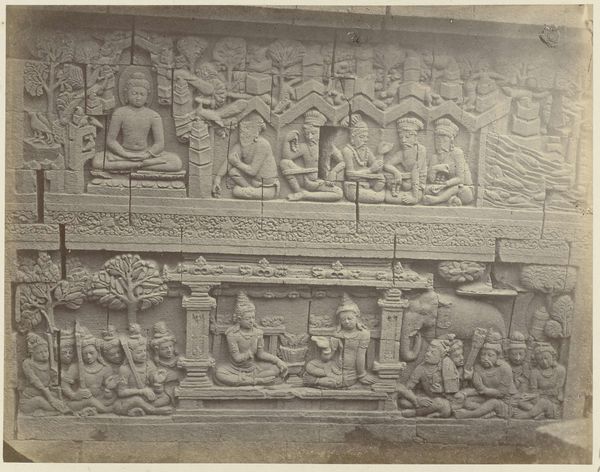
relief, bronze, sculpture
#
narrative-art
#
asian-art
#
relief
#
bronze
#
figuration
#
ancient-mediterranean
#
sculpture
#
history-painting
Dimensions: height 300 mm, width 400 mm
Copyright: Rijks Museum: Open Domain
Isidore Kinsbergen made this bas-relief using stone carving techniques. The stone itself, likely a locally sourced variety, dictates the level of detail and texture we see. Its inherent qualities – density, grain, and color – all play a role in the final appearance. The process would have begun with rough shaping using tools like chisels and hammers, followed by finer work to define the figures and details. Looking closely, we can see the hand of the sculptor in the way the stone has been worked. Each mark tells a story of the labor involved, from the initial quarrying of the stone to the painstaking carving of the narrative. Kinsbergen engaged with an ancient tradition, requiring both physical strength and artistic skill. This wasn't just about aesthetics, but about capturing the very essence of the stone. Ultimately, this bas-relief reminds us that materials, making, and context are essential to understanding an artwork's full meaning. By appreciating the labor and skill involved in its creation, we can challenge traditional distinctions between art and craft.
Comments
No comments
Be the first to comment and join the conversation on the ultimate creative platform.
